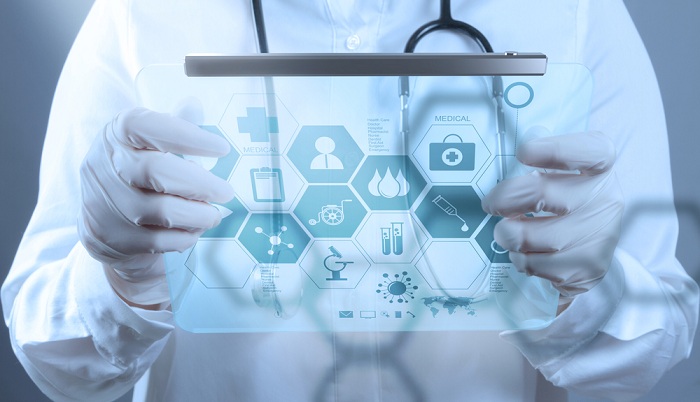Introduction:
Digital twins are often applied to industrial assets, but the healthcare industry can leverage the concept of living model and apply it to patient wellness. This article discusses how the data we generate is a critical part of digital healthcare.
As the connected society continues to be the platform on which we work, rest and play, there is a defined need for every industry to not only leverage the digital engineering tools available but also use them to their best advantage. The convergence of the physical and digital worlds in differing business sectors has been inevitable for quite some time, but the shift from a reactive attitude to a proactive stance is now becoming commonplace.
We are all too familiar with how traditional industries such as banking and finance, manufacturing, the supply chain and retail have all benefited from increased digitalization, but the requirement for data-driven and digital insights has made waves in the healthcare and life sciences sector. Nowhere is this more evident than in the adoption of digital twins in patient care and wellness.
For anyone who is unfamiliar with the concept, a digital twin is a virtual real-time representation of a physical asset or process. A cloud-based solution, the digital version of a physical element utilizes the millions of data points being generated by said assets or processes and allows for the creation of what can be seen as living model of what is happening in real-time.
To date, digital twins have been used primarily for industrial assets or machinery, but the possibilities in terms of digital healthcare solutions go beyond simply knowing when a generator will fail. If we are being more specific, a digital twin of a human being could literally be the difference between life and death.
The digitalization of patient care
The question that needs to be asked, therefore, is how a virtual version of a living person can accurately provide the actionable insights that a medical professional will need to effectively administer care. And, if data is the key to patient wellness, can healthcare providers both treat and (in theory) cure diseases before they become a problem.
The healthcare industry is not a newcomer to the benefits of digital information or algorithm-centered insights. Real-world digital applications such as internet-connected medical devices, wearables and implantables have been available for some time, but the digital twin raises the bar on several levels. Importantly, the digitalization of care is now increasingly cloud-based, with providers using software to validate the situations that are part of their day job.
In fact, researchers and providers have seen the value of a healthcare data analytics platform rise in recent years, driven (in part) by the fact that patients have so many data points to study. What has become clearer to clinicians is that disease can not only be treated with the right information at the right time (often using sensors), but also prevented from becoming a life-threatening event.
If we think about a condition such as, say Chronic Obstructive Pulmonary Disease (COPD), then the use of digital twins to treat the patient becomes a game-changer. According to the World Health Organization, COPD is the third leading cause of death worldwide and responsible for the deaths of around three million people every year.
The key point to remember here is that COPD is not curable per se, but treatable. That means that a patient’s suffering can be alleviated by the application of antibiotics, steroids or nebulized medicine. By integrating a digital twin into the wellness assessment and subsequent preventative processes, a doctor or physical care provider can see where the lung disease has taken hold and act accordingly.
This can be demonstrated in the following scenario:
A person suffering from shortness of breath (a classic symptom of COPD) is admitted to a hospital for diagnosis. Before that patient even gets seen by a doctor, data relating to the condition of that individual is entered as an electronic health record (EHR). High-quality sensors that monitor the state and health vitals are then attached – ECG, air quality, breath straps, temperature and spirometer, for example. The system then pulls data from other life events relating to the person’s medical history into the EHR, generating a digital twin from the historical and real-time data.
The patient is now transmitting data that can be studied, analyzed and acted upon. The digital twin is providing all the information that is required and, in many cases, can accurately predict the results of the various medications administered or even draw on very granular information such as food allergies or similar.
Without the information being provided by the virtual version of the person in front of them, doctors are relying on their expertise to make the right decisions, a situation that is not always possible when time is of the essence.
Digital Twin = Actionable Health Insights
As we have noted above, the digital twin is a living model of a physical object. For the twin to be successful, it must work with that object in such a way that the virtual and real-world versions exhibit perfect synchronicity.
When you apply the concept to “dumb” assets such as machinery, planes, trains and automobiles, then the value of the data generated prevents unintended down time, costly repairs and, importantly, the need to find a replacement. For the record, NASA was responsible for the first practical application of a digital twin back in 2010, when the agency demonstrated how the life support issues with Apollo 13 could have been solved on the ground.
Flip the advantages of a digital twin to a human being and the benefits of knowing exactly what is going on at any one time become a critical part of both ongoing treatment and preventative care. A recent study by researchers at Cambridge University is doing exactly that, using AI and mathematical modelling to “provide a panoramic view over current and future pathophysiological conditions” – in other words, both predicting health issues over time and personalizing healthcare in a digital space.
Data is a commodity that is used by many companies to understand what the customer wants and when they want it, so it follows that the use of these zeros and ones to save lives – or, at the very least, alleviate suffering – will go a long way towards cementing the future of digital healthcare.
Medical professionals have always used data to understand, prevent and cure disease, but that often relies on the combination of learned knowledge and being able to assess the physical state of a patient. A digital twin augments that knowledge and allows for better decision-making. Digital healthcare is both our present and the future, so being able to see the full patient picture is going to be both a logical step forward and, importantly, a literal life saver.



















